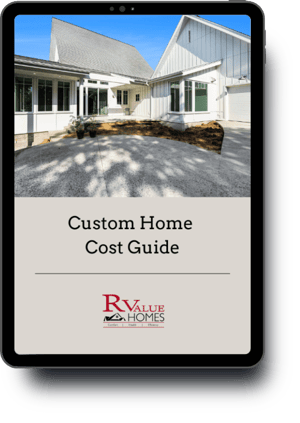3 Min Read
What a Trip to Guatemala Taught Me About Building Homes for Health, Comfort, and Efficiency
Last month, my family and I spent a week in Guatemala building homes for families in need (see picture below). The experience made me reflect on the expectations we have for our own homes.

The families in these Guatemalan villages were overjoyed with the homes we built—simple, small, and constructed quickly at a fraction of the cost of a typical U.S. home. So why don’t we build homes like that here? If we did, the housing crisis might be solved almost overnight! We all want that, right?
That question kept nagging at me: Why do Americans expect so much more from their homes?

What Do We Really Need from a Home?
At first glance, it seems like homes should provide four basic things: shelter, security, space, and affordability. But when you look closer, there’s more to it. Let’s break it down.
1. Shelter
Depending on where you live, your home needs to protect you from:- Sun, heat, and cold
- Wind, rain, and snow
- Poor air quality and noise
2. Security
A home should keep your belongings safe from damage or theft. More importantly, it should be a secure place for you and your family.
3. Space
We expect our homes to accommodate essential activities like sleeping, cooking, eating, and bathing. Beyond that, we also want space for things like work, exercise, play, and entertaining.
4. Affordability
A home needs to be within financial reach—not just in terms of the purchase price, but also ongoing costs like maintenance, energy bills, mortgage payments, insurance, and taxes.

Evaluating the Basics
Let’s compare different types of shelter to see how they measure up.
Tents: The Absolute Minimum
Nobody wants to live in one, and for good reason:
- Shelter: Offers basic protection from sun and wind, but little else. Rain, heat, cold, and noise? Forget it.
- Security: A tent hides your belongings from view but won’t stop anyone from walking in.
- Space: Cooking, bathing, and storage are nearly impossible.
- Affordability: Tents are cheap—but not a long-term solution.
Campers: A Step Up
You could live in one, but...
- Shelter: Better than a tent—it provides insulation, weather protection, and even some noise control.
- Security: It locks, but someone could still hitch it to a truck and drive away. Can you imagine?
- Space: Covers the basics—kitchen, bathroom, and a place to sleep—but not much else.
- Affordability: More expensive than a tent, but still relatively cheap.
Standard U.S. Homes: A Whole Different Level
Typical American homes check all the boxes, offering better:
- Shelter: Thicker insulation, high-quality windows, HVAC systems, air filtration, and soundproofing.
- Security: Solid foundations, strong locks, and sturdy construction.
- Space: Even small homes provide far more comfort and functionality than a camper.
So if a camper meets all the minimum requirements, why don’t more of us live in one? After all, it’s cheaper, and if space is the issue, couldn’t we just park two campers next to each other? Why do we insist on the more expensive option?
The answer is efficiency and durability.
Beyond the Basics: What Makes a Home Better?
Durability – How long does the home last without major repairs? How much maintenance does it require? How well does it stand up to extreme weather?
Efficiency – How well does it provide comfort, security, and space? Does it do these things well, or just barely?
Now, let’s compare campers and standard homes with these factors in mind:
- Shelter: A standard home provides vastly superior insulation, HVAC, air quality, and noise reduction.
- Security: A home is built on a foundation with strong doors and windows—far more secure than a camper.
- Space: While campers technically have everything you need, a home offers it in a much more livable, functional way.
Tents and campers meet the same basic needs, but a house does everything better—and it does so more comfortably and for a longer time. That’s why we’re willing to pay more for one.

But What If Even a Standard Home Isn’t Enough?
If a camper isn’t good enough for most people, who’s to say a typical U.S. home is the ultimate solution? What if we could do even better?
At R-Value Homes, our custom-built houses go beyond standard construction in every way:
- Shelter: Our homes maintain consistent indoor temperatures year-round, providing unmatched comfort. Fresh, filtered air reduces allergens, and noise intrusion is virtually eliminated.
- Security: Insulating Concrete Form (ICF) walls are incredibly strong—far beyond wood-framed construction. Pair that with hurricane-resistant windows and doors for next-level protection.
- Affordability: The percentage increase in cost from a camper to a standard home is far greater than the cost jump from a standard home to a custom R-Value home. Plus, our homes save you money over time—lower energy bills, fewer repairs, and reduced insurance costs.
You Don’t Have to Be an Environmentalist to Want a Better Home
You don’t have to be obsessed with sustainability or dream of an all-electric home to want something better. You just have to recognize that a better-built home means a better quality of life.
Maybe this isn’t for you—you’re not planning to build, or you’re moving in a couple of years. That’s fine. But if you know someone frustrated with their home, share this with them.
And if you’re curious about what a home with superior comfort, durability, and efficiency could look like for you, let’s talk. No pressure—just a conversation.
Because once you realize homes can be better, why settle for less?
Custom Homes in West Michigan: Everything You Need To Know
Wondering what an energy-efficient home costs in West Michigan? We can explain the various factors involved. At R-Value Homes, you benefit from our decades of industry experience. Owner Jake Vierzen has developed deep insights into the overlapping benefits of energy efficiency and custom home design, becoming an expert in ICF home construction. Contact us today!





